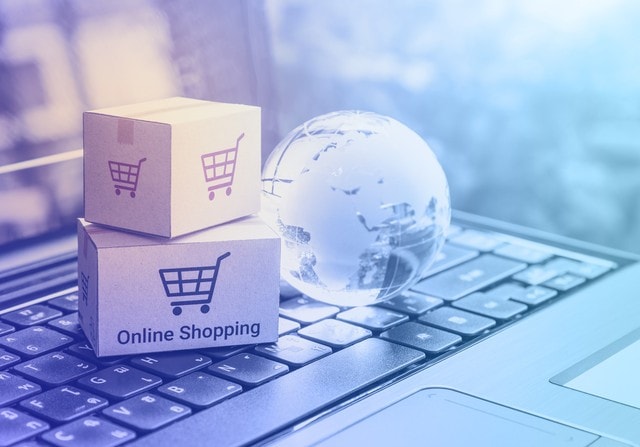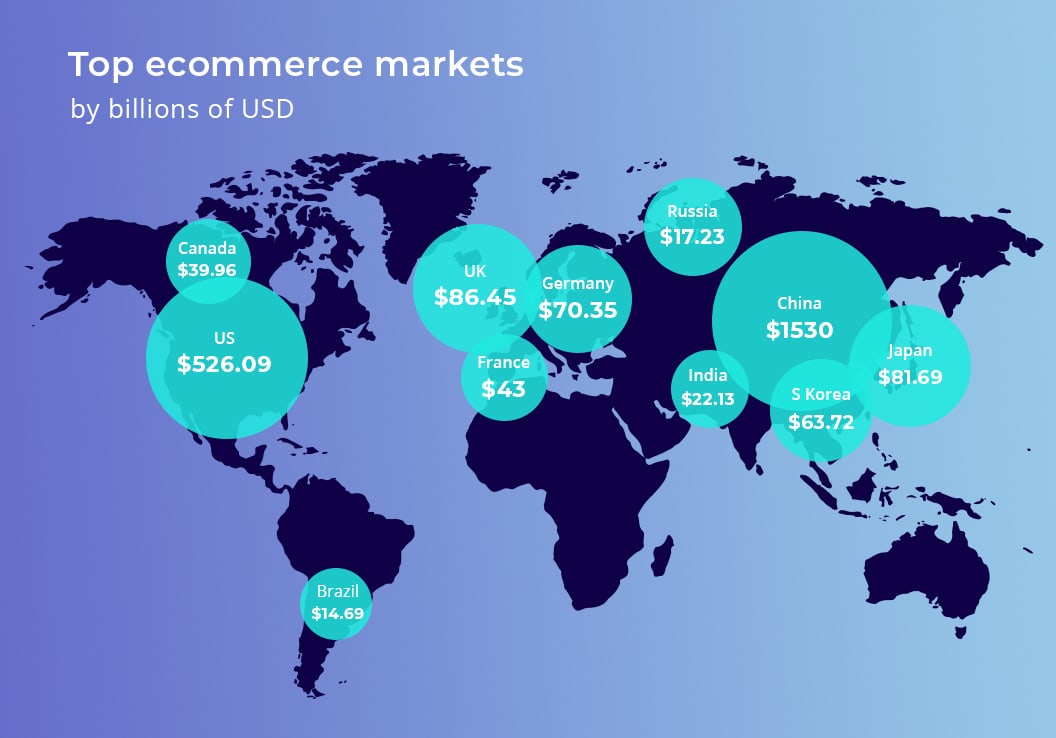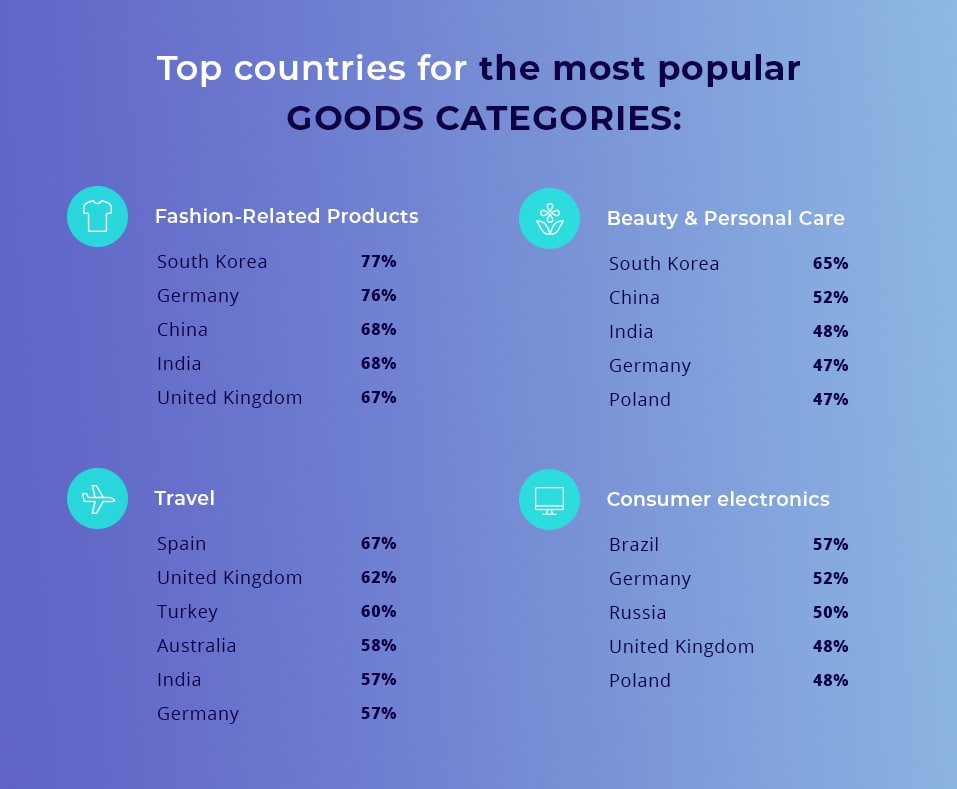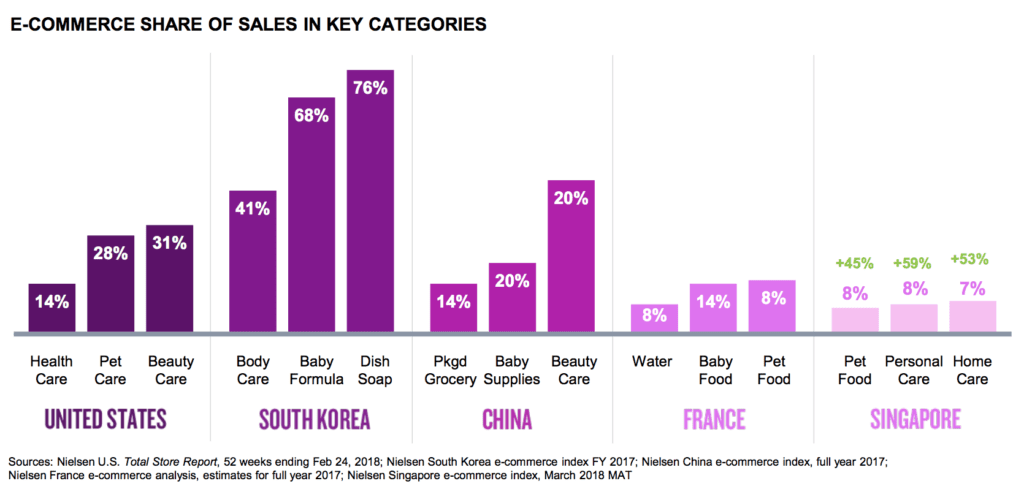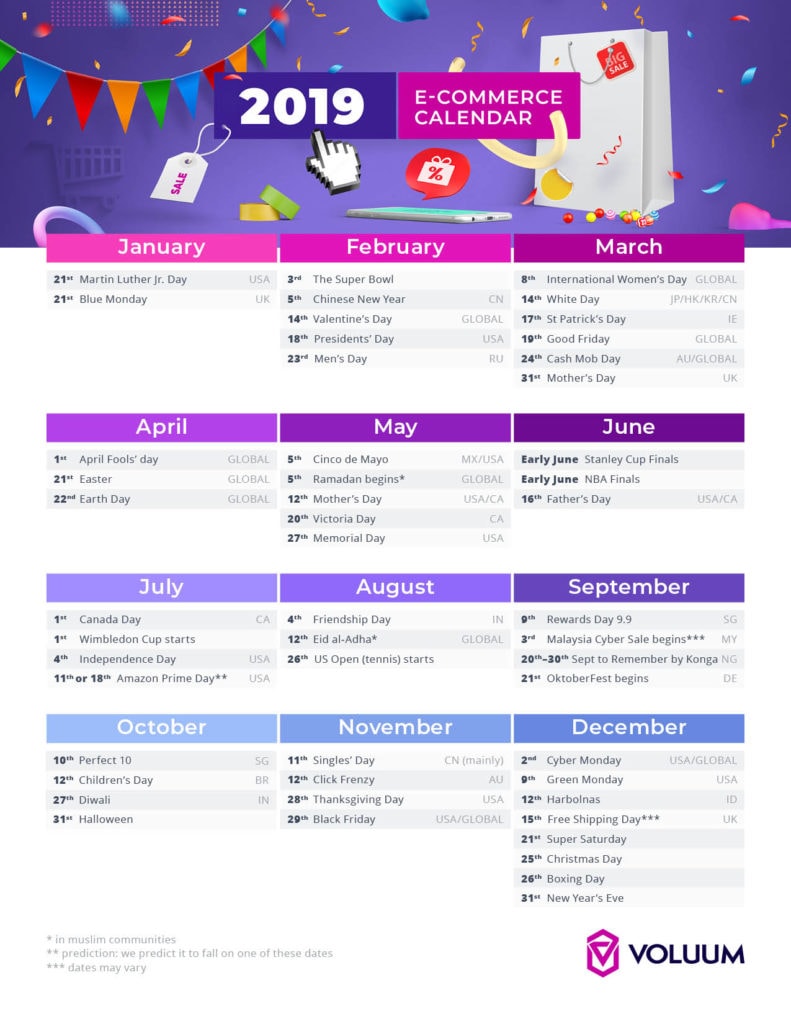For affiliate marketers working in the eCommerce domain, it may feel like all the key shopping events are squeezed in the last quarter of the year, kicking off with the US Thanksgiving day. But it is not necessarily true. As succeeding in eCommerce efforts is a marathon, every single day of the year is a great opportunity to drive sales and grow business. Special shopping events, holidays happen around the world every day. So, no matter which region you are operating in at the moment, taking advantage of global holiday events and special dates is a huge opportunity to capitalize on.
In this article, we will explore some of the biggest shopping events in the world. But first, let’s have a quick overview of some major eCommerce stats and the top global marketplaces.
Key eCommerce Statistics
Statista reports in 2017, eCommerce sales worldwide made to 2.3 trillion US dollars and are projected to grow to 4.88 trillion US dollars in 2021. The top 3 online stores’ revenue amounted to almost 100 billion US dollars in 2017.
- In 2017 Amazon accounted for 44% of all US eCommerce sales.
- Millennials make 54% of their purchases online.
- In 2017 56% of browsing took place on mobile devices. However, 67% of all holiday shopping revenue came from desktop.
- Criteo projects by 2026 24/7 accessibility and fast turnaround will be the norm, driven by Millennials and Generation Z consumer groups.
- Small retailers may have up to 30% higher mobile conversion rates compared to bigger retailers.
- Multichannel shoppers spend 3 times more than single-channel shoppers.
- A ReadyCloud report finds that 44% of retail internet minutes were spent using a smartphone device versus 11% spent using a tablet, and 45% – using a desktop.
- 55% of online shoppers share with friends and family when dissatisfied with a product or a company.
- 40% of US males aged 18-34 say they would ‘ideally buy everything online’, compared to 33% of females in the same age group.
- Americans spend 64% of their shopping budget in-store, and 36% online.
- In the US only shoppers spent US$6.59 billion on Cyber Monday, with mobile shopping contributing to US$2 billion revenue.
- According to the research, 40% of millennials have used voice search before making a purchase decision online. 20% of Google searches on mobile are voice.
Global Marketplaces
The success of the eCommerce landscape is highly dependent on consumers’ ability and desire to shop online, which is influenced by the already-established reputation of digital businesses. According to Shopify and Statista, the current list of the world’s most lucrative eCommerce hubs looks the following:
China
eMarketer reports eCommerce sales in China are projected to surpass expectations as they reach US$1.53 trillion in 2018. Last year, eCommerce sales exceeded estimates by US$44.41 billion, driven mainly by sales from leader Alibaba’s Taobao and Tmall.
Top marketplaces
- Alibaba
- AliExpress
- JingDong (JD)
- Taobao
- Tmall Global
- XiaoHongShu
Japan
eCommerce sales in Japan will be worth US$81.69 billion in 2018. The market’s largest segment is Food & Personal Care with a market volume of US$20.89 billion in 2018.
Top marketplaces
- Amazon Japan
- Rakuten
South Korea
Similar to Japan, M-commerce is extremely popular among the country’s consumers. Statista reports in 2018 eCommerce revenue will amount to US$63.72 billion.
Top marketplaces
- GMarket
- Coupang
United States
Total eCommerce sales in the US are estimated to increase by almost 16% in 2018, to US$526.09 billion, accounting for almost 10% of total retail sales.
Top marketplaces
- Amazon
- Best Buy
- eBay
- Etsy
- Jet
- Newegg
Canada
In 2018, eCommerce revenue in Canada is projected to total US$39.96 billion. Online sales are expected to increase to US$55.42 billion by 2023.
Top marketplaces
- Amazon Canada
- Best Buy Canada
- eBay Canada
- Etsy Canada
- Newegg Canada
United Kingdom
The UK eCommerce market is worth US$86.45 billion in 2018 and is expected to reach US$113.64 billion by 2023, expanding at an average rate of 5.6% between 2018 and 2023.
Top marketplaces
- Amazon UK
- eBay UK
- Etsy UK
- Not on the High Street
- Zalando UK
- Argos
- Tesco
- Netflix
Germany
eCommerce sales in Germany are forecasted to reach US$70.35 billion in 2018, growing on average 6.3% per year from 2018 to 2023 and passing US$95 billion in 2023.
Top marketplaces
- Amazon Germany
- eBay Germany
- Otto
- Tchibo
- Yatego
- Zalando Germany
France
The French eCommerce market is projected to grow at an annual rate of 7.8% and is anticipated to be worth US$72 billion by 2023.
Top marketplaces
- Amazon France
- Fnac
- eDreams
- CDiscount
- La Redoute
- Vente-Privee
- Voyages-sncf
India
Indian eCommerce revenue is worth US$22.13 billion in 2018 and is expected to reach US$51.24 billion by 2023, growing at an average annual rate of 18.3%.
Top marketplaces
- Flipkart
- Amazon India
- FSN/Nykaa
- IndiaMART
- Snapdeal
- MakeMyTrip India
- Myntra
Russia
According to Statista, Russia’s eCommerce activity is showing positive growth with a projected sales revenue reaching US$17.23 billion by the end of 2018. The fashion segment is the market’s largest with a total volume of US$5.37 billion in 2018.
Top marketplaces
- Alibaba
- Citilink
- DNS
- Kupishoes
- M Video
- Ozon
- Ulmart
- Wildberries
- X5 Retail Group
- Yandex.Market
Brazil
Brazil closes the list of the top eCommerce markets in the world with US$14.69 billion in 2018. The country is considered to be full of untapped potential for merchants and advertisers in the Latin America region.
Top marketplaces
- Amazon Brazil
- Americanas
- Casas Bahia
- Extra
- Mercado Libre Brazil
- Submarino
Knowing the market size and potential is essential. But more important than market size is understanding your market fit. Nielsen’s Global Connected Commerce report provides a detailed breakdown of the most profitable industries by country:
Data Source: Nielsen
Start Selling All-Year Around
eCommerce efforts that leverage multiple selling opportunities throughout the year offer a bounty of occasions for affiliates to profit in between January and the end of September. So, if you consider shifting to a year-round promotion strategy, you have to start thinking and planning well ahead.
Do not just limit yourself to the obvious shopping events, such as Black Friday or Easter, explore international holiday days, or month-long celebrations like Women’s History Month in the US (March), and don’t be afraid to tap into markets and target new niches.
With just a little work you benefit from the potential of the following global shopping events and propel your business’ cash-generating capabilities.
Prime Day
This epic event usually takes place in the second week of July. Amazon Prime Day is considered to be one of the major mid-year sales events that keep consumers glued to their laptops, tablets, and phones in their desire to catch the best deals.
This year Prime Day bonanza got to some new countries and globally is reported to be the biggest day of sales in Amazon’s history. Last year, Amazon sales grew more than 60% during the event, breaking the record at the time and surpassing Amazon’s Black Friday and Cyber Monday sales combined.
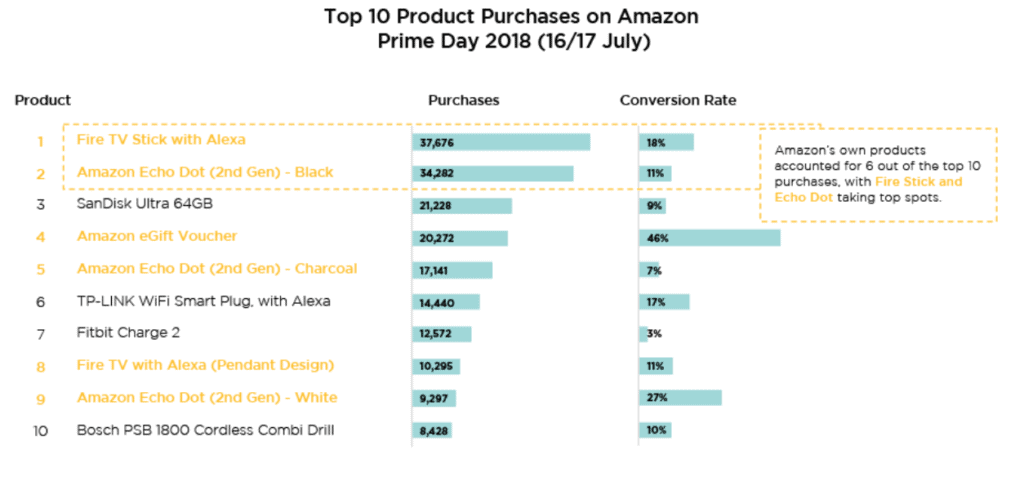
Single’s Day
Another mega-shopping gig, mostly known in Southeast Asia, takes place on the 11th of November. With a strong anti-Valentine’s vibe, Single’s Day is widely celebrated by young Chinese people who take pride in being single.
Today Single’s Day has turned into the biggest online shopping festival. Heavily promoted by the Alibaba Group this year it broke its own records. Within 24 hours the total sales of the participating merchants exceeded US$30.8 billion, smashing last year’s figures by nearly 20%.
European eCommerce also leveraged the potential of this shopping event. But on a global scale, Single’s day is less popular in Europe and Americas in comparison to Black Friday and Cyber Monday. In any case, the holiday offers tremendous potential.
If you want to seize the opportunity to get a piece of that big pie, you should start thinking about your own Singles Day promo campaign. This year’s best selling categories included: fashion & beauty, sportswear, tech devices, and home appliances, healthcare products, and even bulky items, such as furniture and automobiles.
White Day
The Japanese version of the Valentine Day falls on March 14th. Launched in Japan over 35 years ago by the local confectionery industry as a “Marshmallow Day”, today White Day is not exclusively a Japanese holiday. It is very well known and celebrated across other Asian countries, such as South Korea, Vietnam, Taiwan, China.
Source: GIPHY
Its name stems from the holiday’s marshmallow origins, signifying the purity of young love and because it is also the color of sugar. In Japan, on Valentine’s Day women traditionally give gifts to men. White Day is a chance for men to return the favor. As a result, it’s a huge shopping event, especially given the fact Japan joins China and South Korea as an eCommerce market with immense opportunities to capitalize on. It is definitely a day worth adding to your promo calendar.
Boxing Day
Boxing day has nothing to do with the sport of boxing. According to the Guardian, “Boxing Day” was popularized in Victorian England as a practice of giving small boxed gifts. Always celebrated on December 26th, Boxing days is widely popular in the English-speaking countries, precisely in the UK, Canada, Australia, South Africa, and New Zealand. In 2017, in the UK alone the Boxing Day shopping sale broke a record of US$5 billion.
December 26th is in general big for holiday shopping in countries across Europe. In Germany, for instance, it is called “Second Christmas Day”. And there are always plenty of deals floating around for shoppers to catch what Santa forgot to bring the day before.
Diwali
Diwali, India’s biggest festival, which is celebrated by millions of people in India and across the world, is also the largest shopping event in the region. The five day “Festival of Lights” is the season when most eCommerce companies generate the largest chunk of their annual sales.
Fashion, consumer electronics, jewellery, and watches are among the most popular gift items during these festivities. According to Fortune India, last year the festive sales period started as early as September 20th and continued 30 days. The collective sales revenue of Indian e-tailers (Flipkart & Amazon among them) during this period have reached US$3.2 billion.
Given the fact that the eCommerce segment in India is considered to be a market with huge growth potential, the Diwali fest definitely opens up endless monetization opportunities. Just remember, Diwali’s date changes from year to year. But it usually falls about a month before Black Friday. In 2019 the festivities will begin on the 27th of October.
Children’s Day
Children’s day is one of the most popular and loved holidays in Latin America. There are several variations of the holiday across the region. And Brazil, being the country with the biggest eCommerce market, celebrates Children’s Day every October 12th.
There are high expectations surrounding this date. Children expect a small Christmas-like day. And business owners use this holiday as a golden opportunity to gauge sales and increase their profits throughout the year.
Research conducted by Vindi, Neoassist, and Mindminers revealed the 5 most bought gifts for the date are: toys (72,6%), clothes (39,3%), shoes (26,5%), games (22,1%) and books (19,3%). This year Children’s Day sales revenue is worth US$500 million in Brazil alone.
The Super Bowl & other big sports events
Sports is a big business. And with technological advancements, it offers unprecedented global growth and commercial opportunities. The global sports industry was valued at US$265 billion in 2017. Western Europe is the largest region, accounting for 33% of the global market. And the USA was the largest country accounting for US$48.6 billion or 18.3% of the global spectator sports market.
Sports merchandise and all sports-related segments (including e-Sports, sports betting, sports events streaming services etc.) are very lucrative fields to tap into. With so many sports events around the year, digital entrepreneurs have all chances take advantage of the biggest and the most popular ones, such as the Super Bowl, NHL and NBA playoffs, the Golden Slam, and multiple national championships.
Instead of a Conclusion
No matter which events you choose to focus on in your 2019 eCommerce strategy, planning ahead is essential.
Download Your 2019 eCommerce Calendar now!

